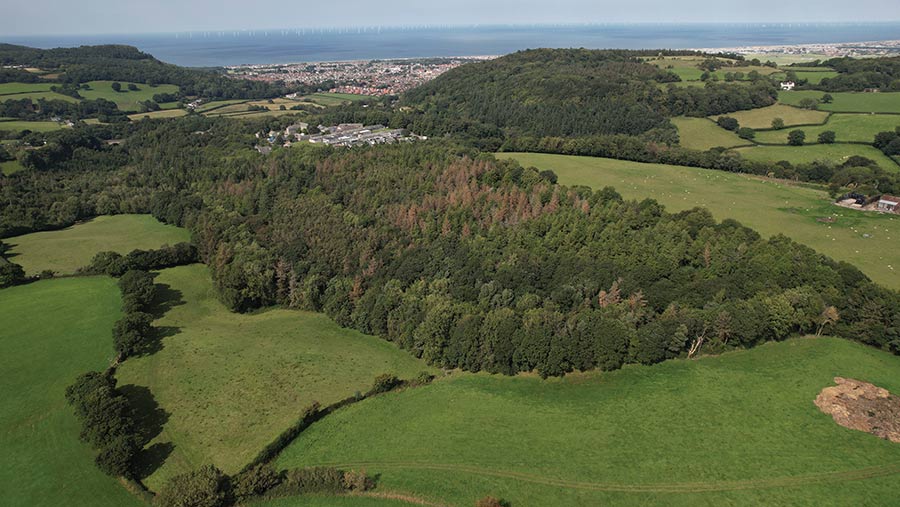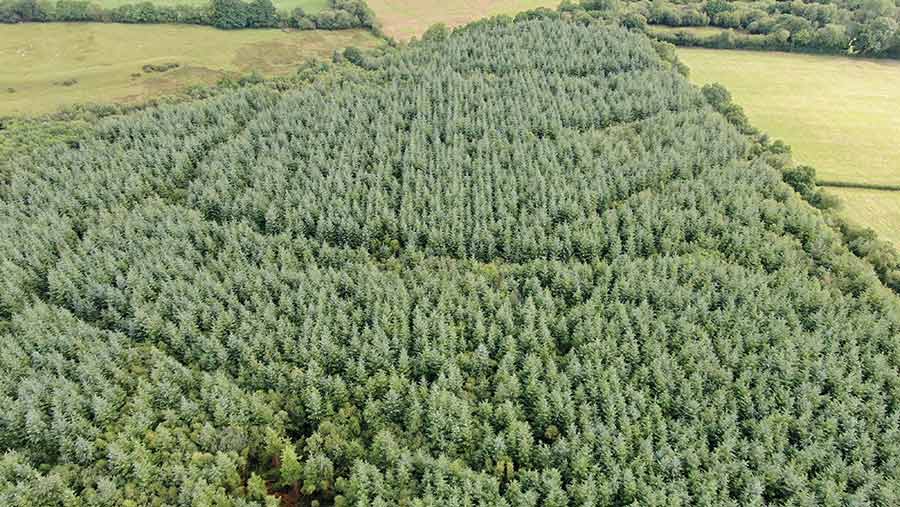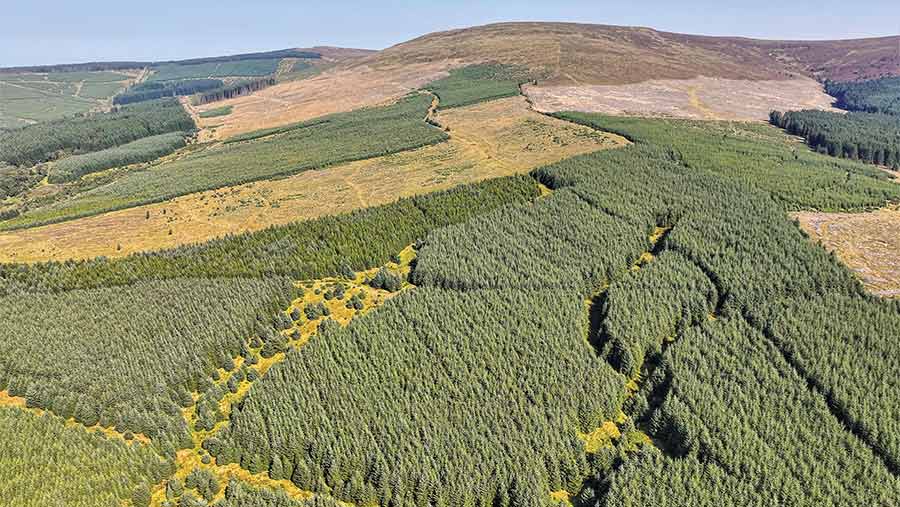Woodlands and forests on the market in Wales and Scotland
 Abergele Woods © Goldcrest
Abergele Woods © Goldcrest Woodlands are the focus this week, with the farmland market quiet in terms of new launches.
Recently launched in north Wales is almost 157 acres of mixed woodland just south of Abergele in Denbighshire.
This has maturing conifer crops, mixed broadleaves with ancient woodland and good internal infrastructure.
Close to timber markets and with sporting potential, the woodland offers views over the north coast of Wales that are described by selling agent Goldcrest as stunning.
See also: Forestry market maintains strength on slower growth
It is lotted in two close but non-adjoining parcels, with an overall guide price of £900,000 or £5,732/acre.
The first lot, Tower Wood, is almost 104 acres, on steep lower slopes with less steep ground in the south of the parcel.
The woodland here is a mixture of native broadleaved species including oak, ash, hazel and rowan to the north and lower slopes with mixed conifers.
Its Sitka spruce and Japanese larch are not yet thinned and the lowest slope has a stand of good Douglas.
Other lower slopes are a mixture of ancient semi-natural and ancient replanted woodlands.
Coed Ysgeriallt, with just over 53 acres, is the second lot and more secluded, with a mix of ancient semi-natural and ancient replanted woodland, mixed conifers including Douglas fir, Sitka spruce, Japanese larch and grand fir.
Ceredigion

Blaen Waun © John Clegg & Co
Also in Wales is 26 acres of compact, productive and sheltered Sitka spruce with a broadleaved edge.
Blaen Waun is near Lampeter in Ceredigion, with conifers planted at around 1.5m between trees and 2m between rows.
The site is described as highly productive, with large stumps, now overgrown, showing that a previous crop had been grown there.
The woodland has a valid Natural Resources Wales felling licence running until 20 July 2025, says selling agent John Clegg & Co.
This covers unconditional selective felling/thinning and the woodland is ready for this to be carried out to provide space and light for the remaining trees to grow on, along with some income.
The broadleaved fringe includes oak, willow, alder, rowan and hazel, which lead to well-defined woodland/field boundaries.
The site is well drained, not exposed and has a £250,000 guide price.
Scale in Scotland

Peel Forest © John Clegg & Co
At the other end of the scale is a large commercial conifer forest in the Scottish borders, close to established timber markets.
Peel Forest is almost 1,354 aces and is a second-rotation commercial forest planted with high-yield class conifer crops.
Also on the market with John Clegg & Co, this is one of the largest commercial forestry offerings to come to the open market this year and carries a guide price of offers over £4m.
Peel Forest was originally planted in the 1960s by the Forestry Commission, with a commercial timber crop.
Following felling of the first rotation, the property has been replanted with a substantial area of predominantly Sitka spruce.
There is also some Norway spruce, Scots pine, Serbian spruce, larch and mixed broadleaves.
The land includes a dilapidated farmhouse and steading to the north-west of the forest, with development potential, subject to planning consent.
“The combination of an attractive age profile, high-yield class conifer crops and an excellent location makes Peel Forest a well-balanced investment opportunity, so we expect to see significant levels of interest,” says Harry Graham, associate director, John Clegg & Co.
“There is still high demand for commercial forestry, despite investors taking a more cautious approach during this period of uncertainty. Prices remain strong, with best-in-class forests still performing well.”
